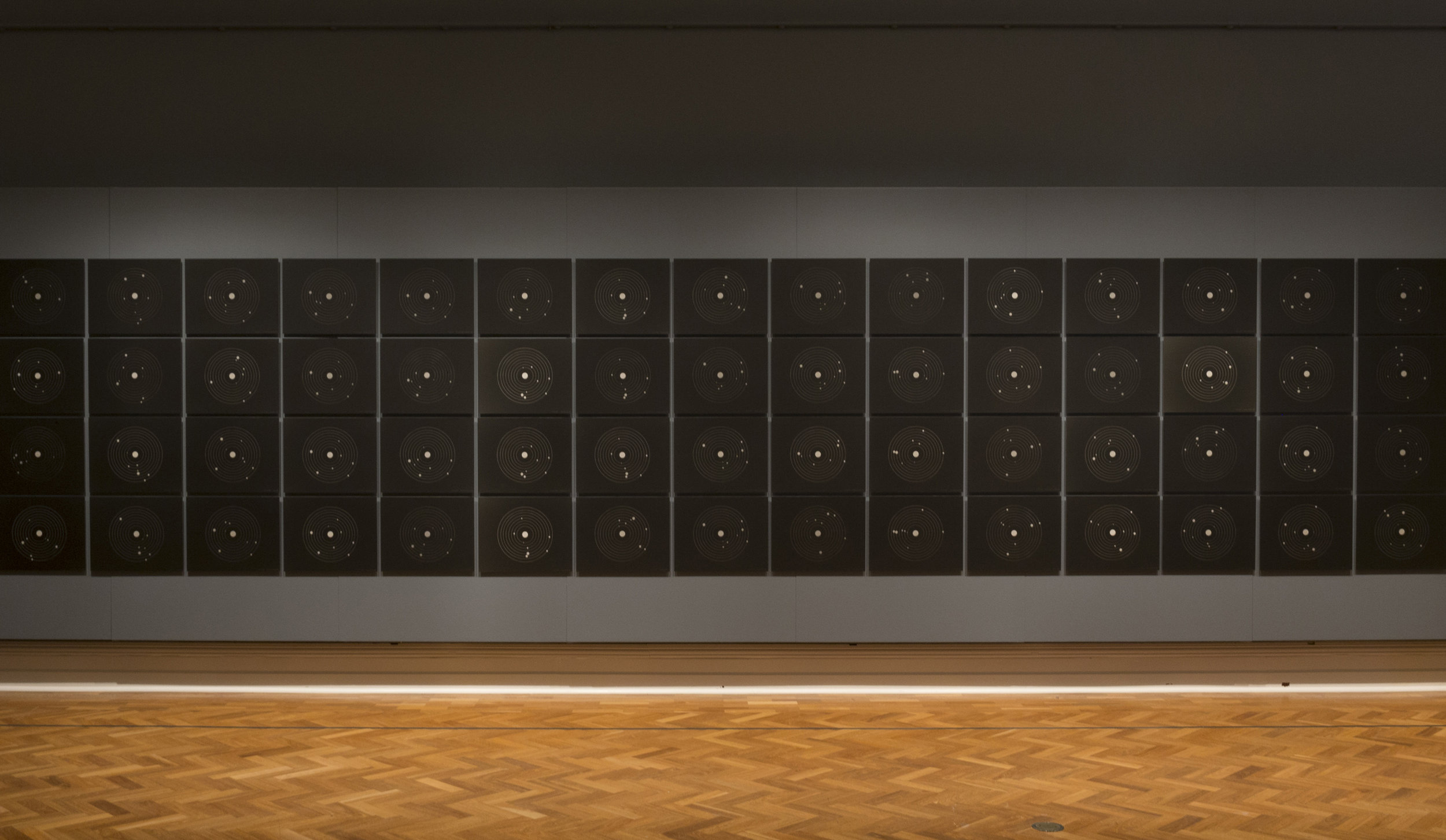
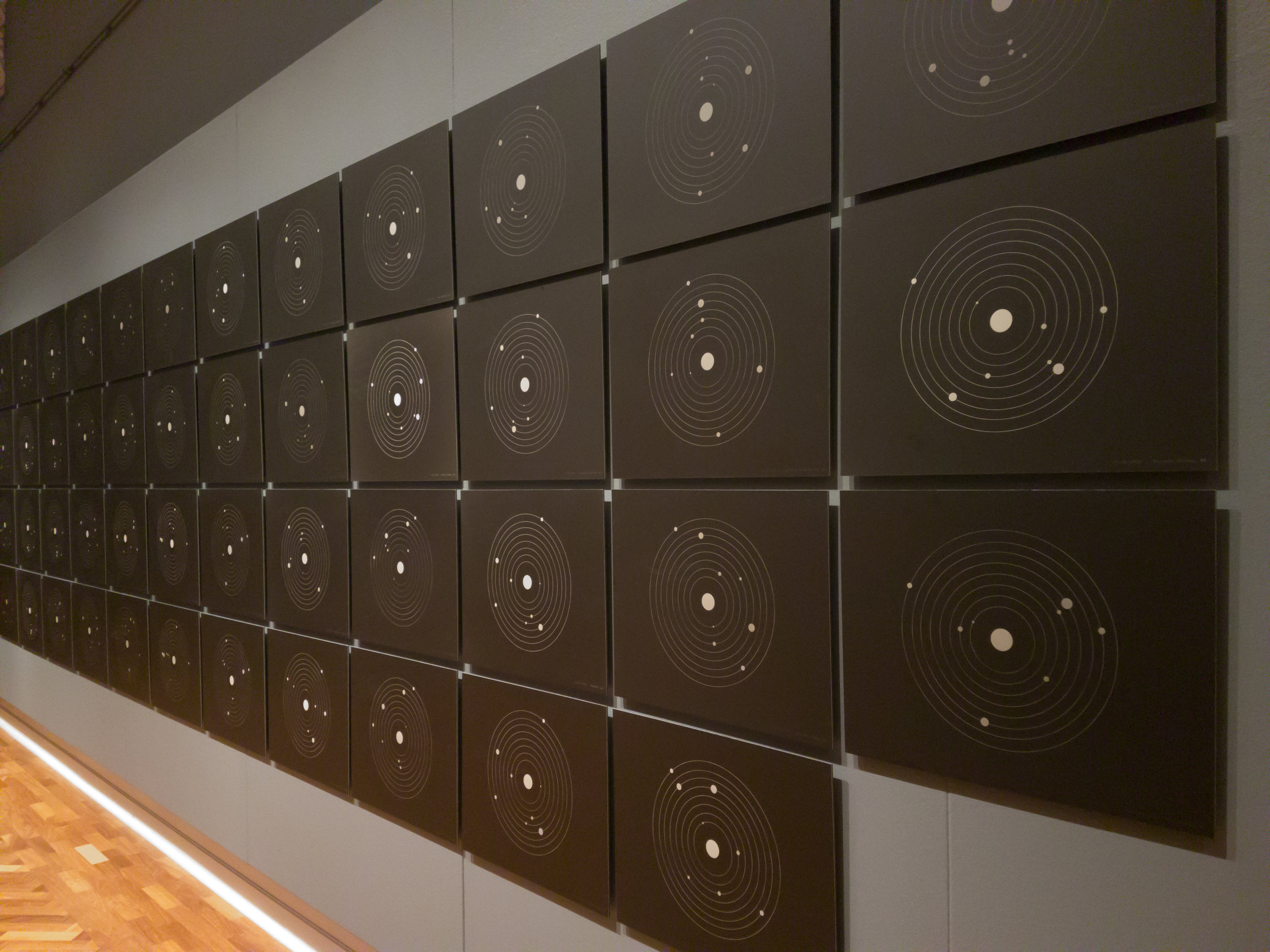

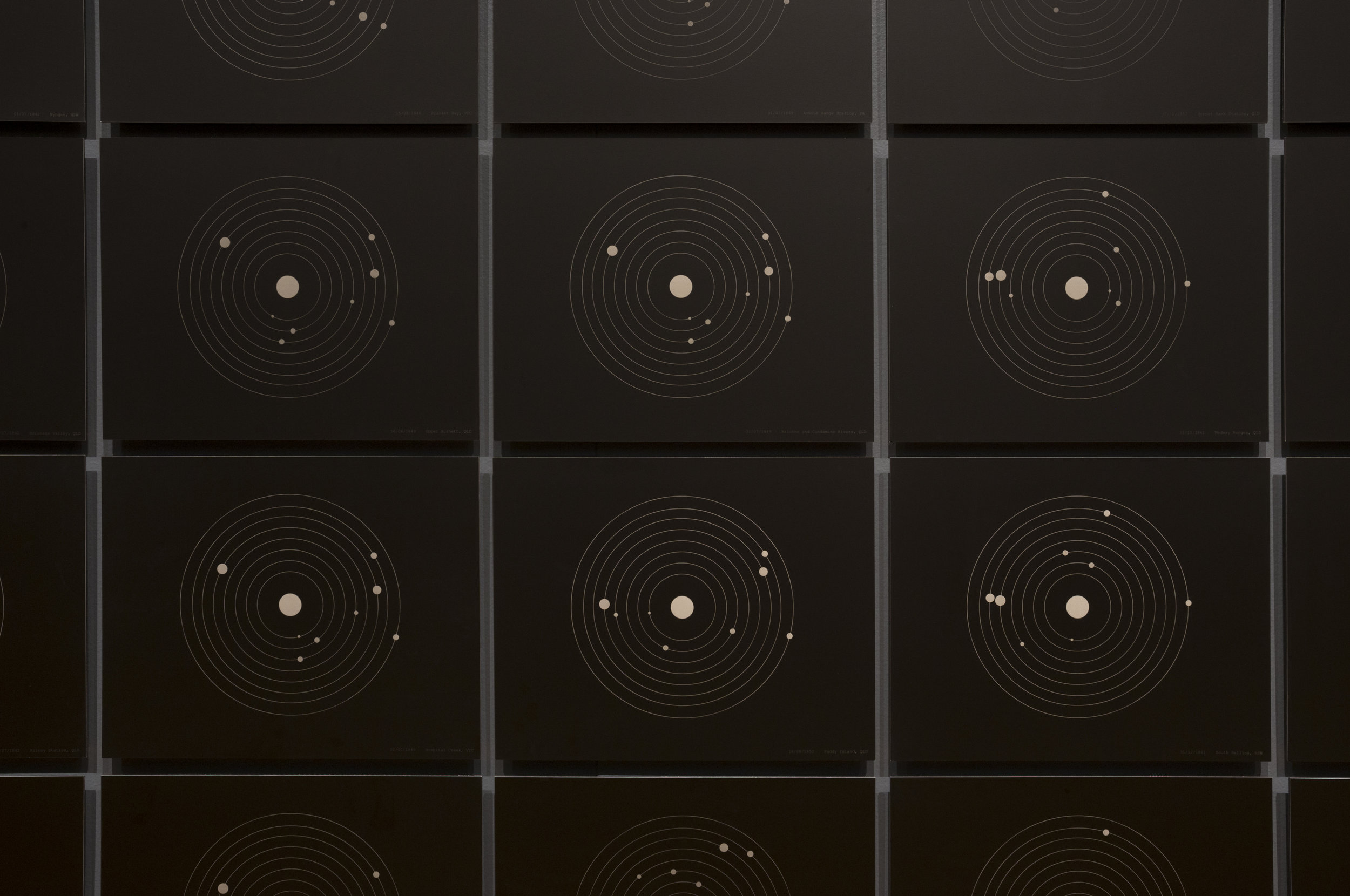
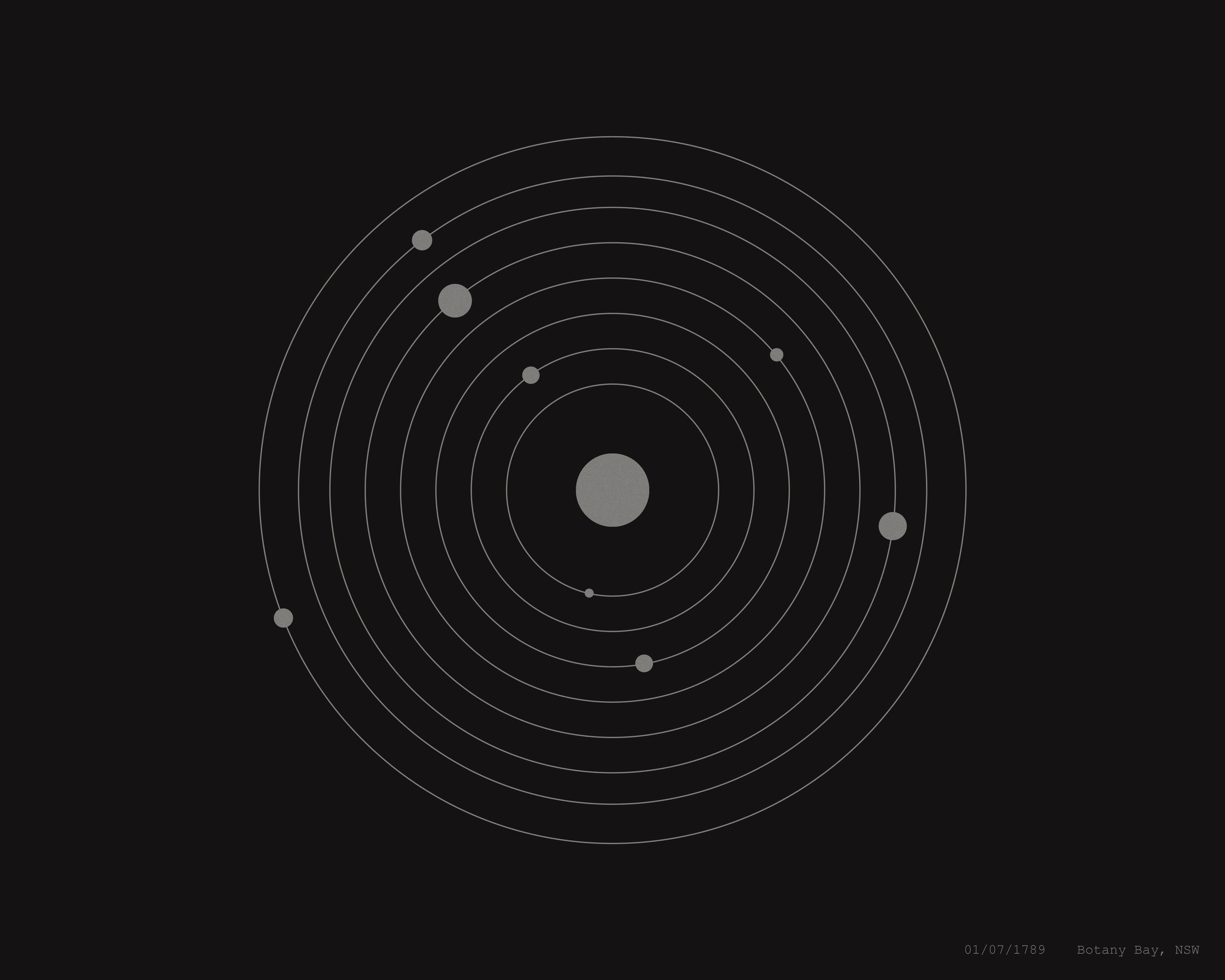
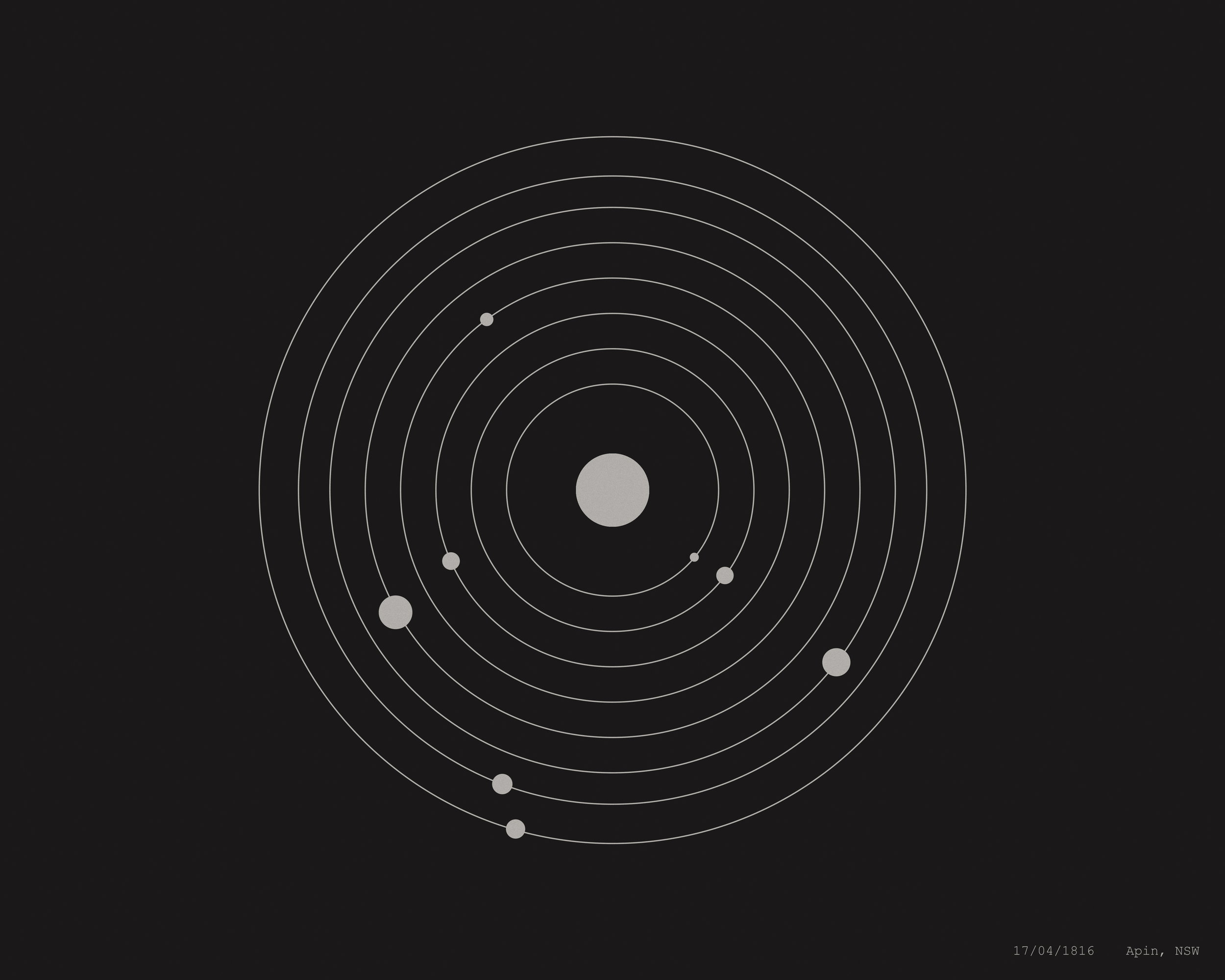


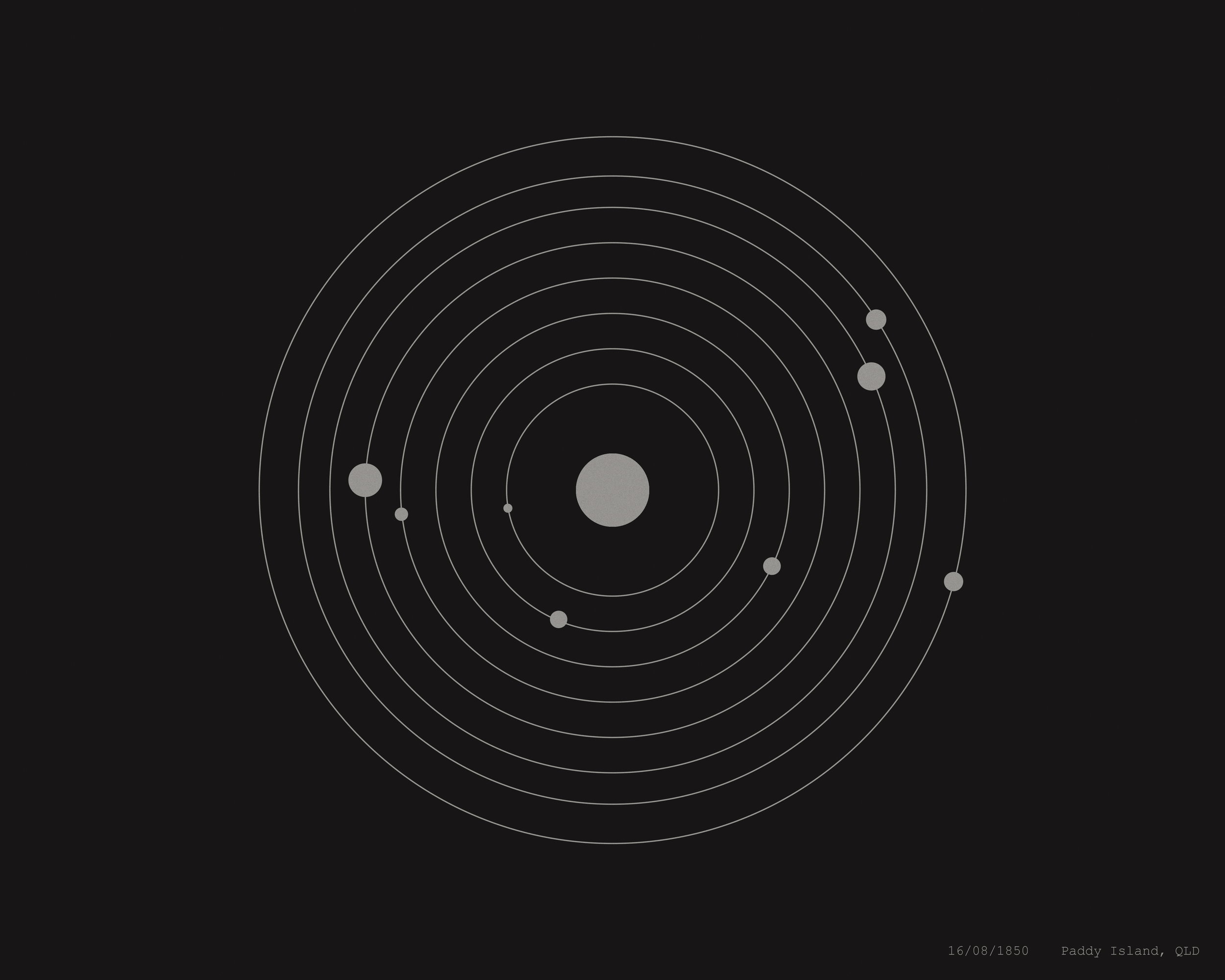
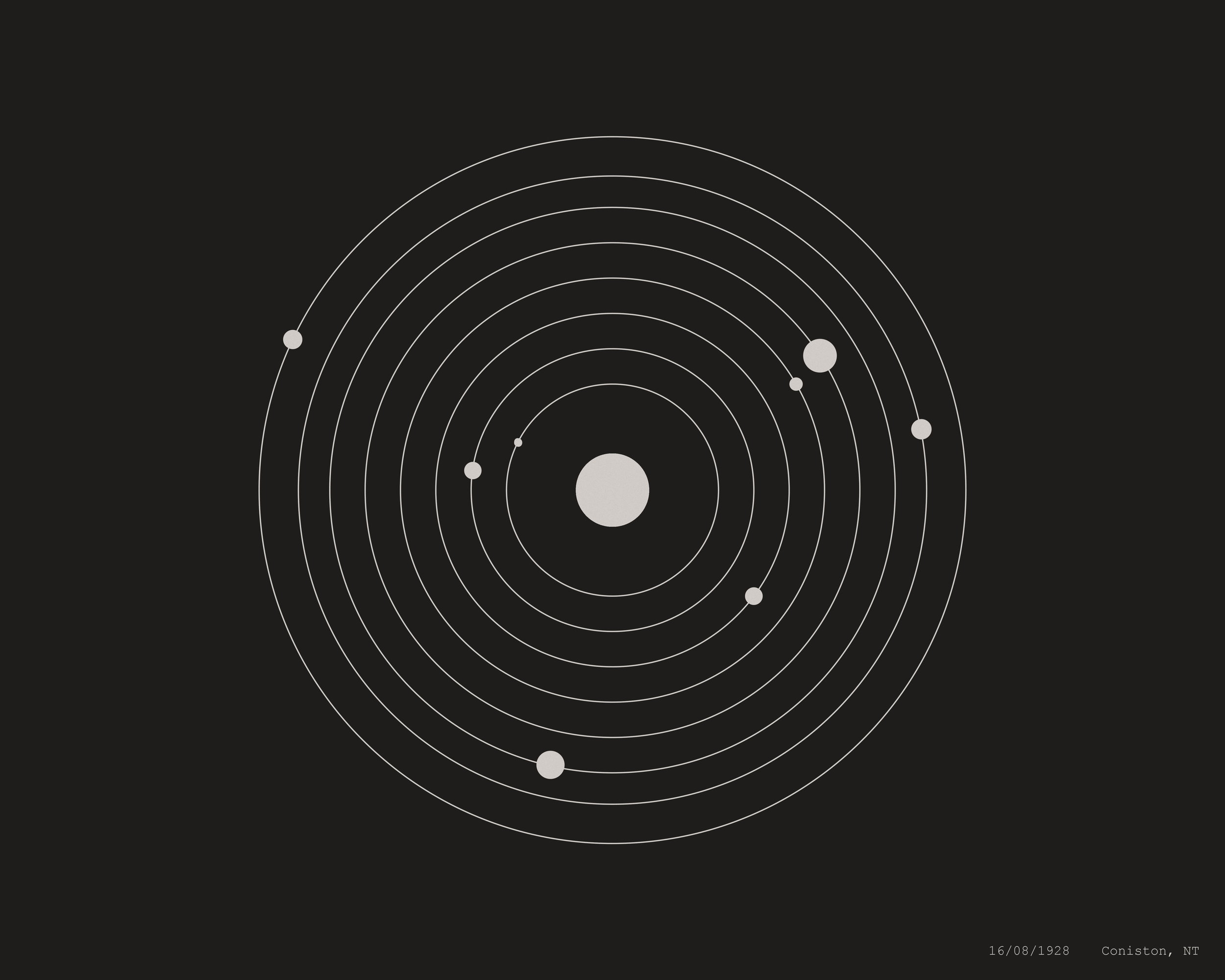
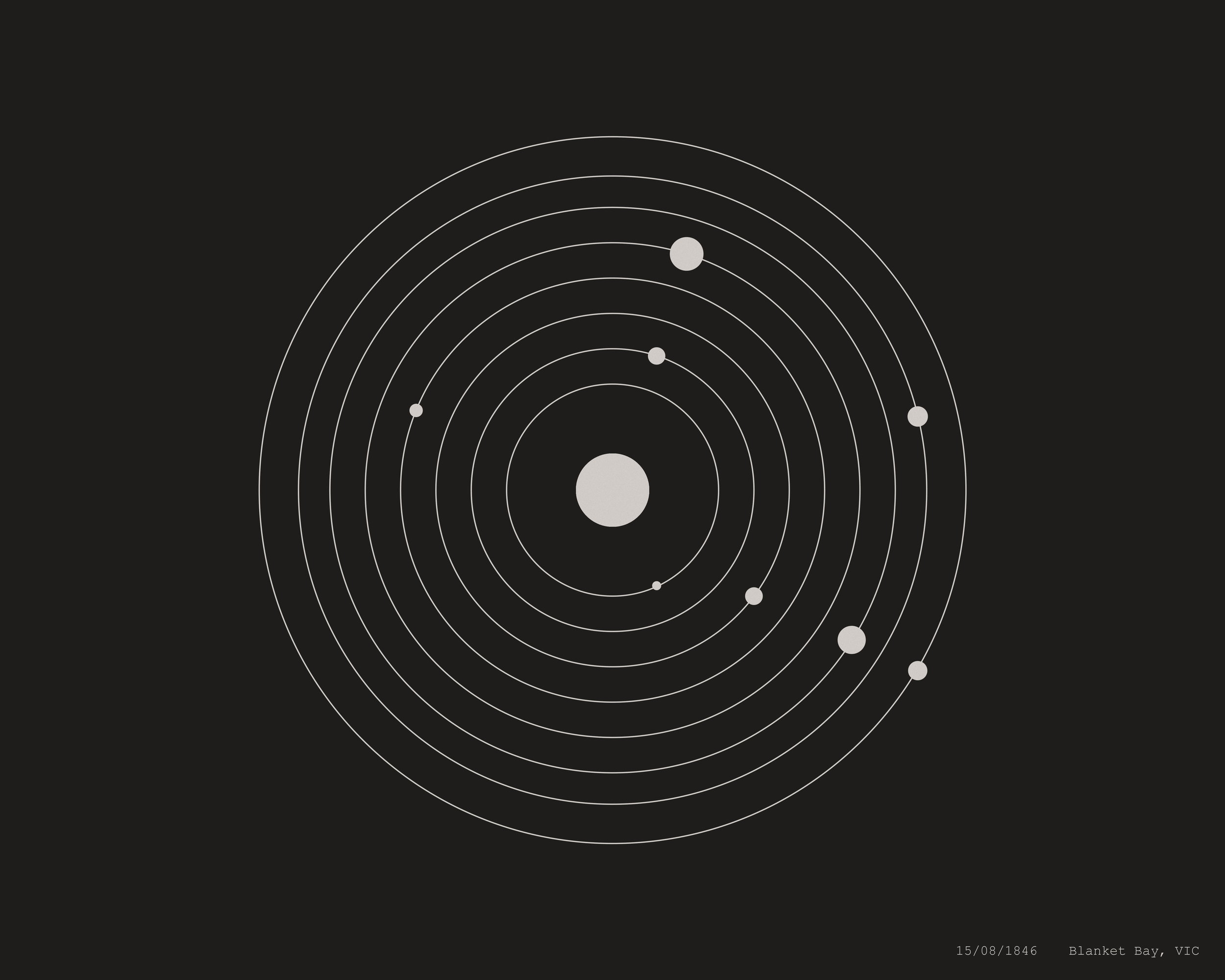
Under One Sun
2017
63 silver gelatin prints
16 x 20 inches each, installation dimensions variable
Commissioned by the Australian Centre for Photography for the exhibition Under the Sun: Reimagining Max Dupain's Sunbaker
Installation view: State Library of NSW. Photographs: Michael Waite
Created in response to Max Dupain's Sunbaker, Under One Sun is a sequence of 63 black and white photographic prints that document the positions of the planets over a series of dates, between 1789 and 1928, on which massacres of Indigenous Australian peoples took place.
Presented as a grid of solar system diagrams, Under One Sun seeks to weave together and unveil numerous interconnecting historical narratives, addressing aspects of Australian culture that are implicitly ingrained within Dupain’s iconic image.
Over the years, Sunbaker has come to represent an idealised vision of Australia, featuring the ‘body perfect’ as young, white and male. As Senior Curator of Photography at the National Gallery of Victoria Isobel Crombie argued, Max Dupain would have been heavily influenced by the philosophy of vitalism, the "body culture" movement and pseudo-science of eugenics that prevailed during the interwar period. In many ways, the Sunbaker could be seen as quintessential of "a white Australia" and exemplify the ideas of “regeneration of a race through the revitalisation of the body”.
This series 63 photographic gelatin silver prints draws temporal and subjective parallels between the development of photography, science and the colonisation of Australia.
Advances in astronomy and navigation were crucial to the expansion of the British Empire. James Cook’s first voyage indeed aimed at documenting the 1769 Transit of Venus from Tahiti and investigating the possible existence of Terra Australis Incognita, “Unknown Land of the South”. Observations of this astronomical phenomenon allowed scientists to further refine navigational tools as well as accurately measure the distance between the Earth and the Sun. The first Englishman to map the east coast of ‘New Holland’, Captain Cook claimed the coast and, in 1788, the British Empire opened the way for the European colonisation of Australia.
Taking a dramatically zoomed out view of the timeframe implicated in Dupain’s photograph, Under One Sun represents verified as well as alleged historical data via a series of solar system diagrams. Appearing almost as targets, the planets pierce the diagrams like bullet holes; a planetary finger print of the date being recorded. Reflecting on our shared position under the one sun, the work alludes to the extermination of Aboriginal peoples during colonisation whilst acknowledging the lack of exhaustive and verified historical data associated with this shared history.
Deliberately based on Wikipedia’s open-source listing of Indigenous massacres in Australia, the artist highlights the ambivalence and complexities to represent and discuss a fundamental part of Australian history.
Planetary calculations are made accurate to midday on the date in question, where one is known, with median dates used for conflicts spanning longer periods of time or where the exact date is undocumented. Western place names have been used to assist in locating these events, based on geographical names registers, historical and modern-day maps.
The artist would like to acknowledge the Gadigal of the Eora Nation, the traditional owners of the land on which this project was produced, and the Warlpiri of Willowra (Wirliyatjarrayi), the traditional owners of the land on which the artist was born and whose people were affected by the last massacre documented in this project.
Sincere thanks to Claire Monneraye, Michael Waite and the ACP for their support of this project.